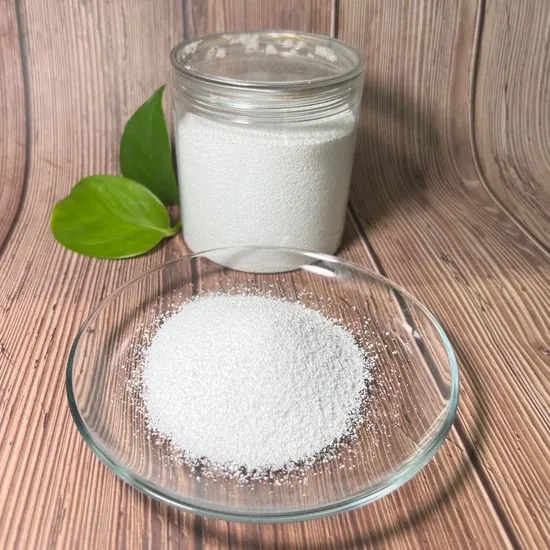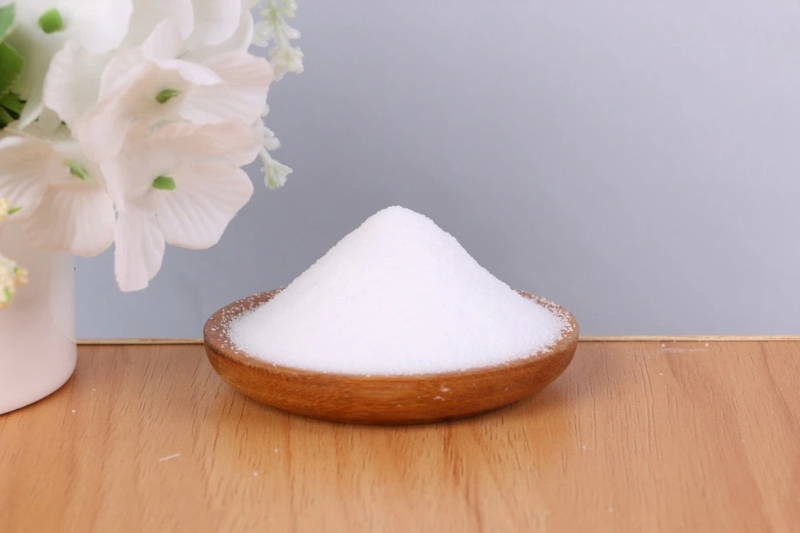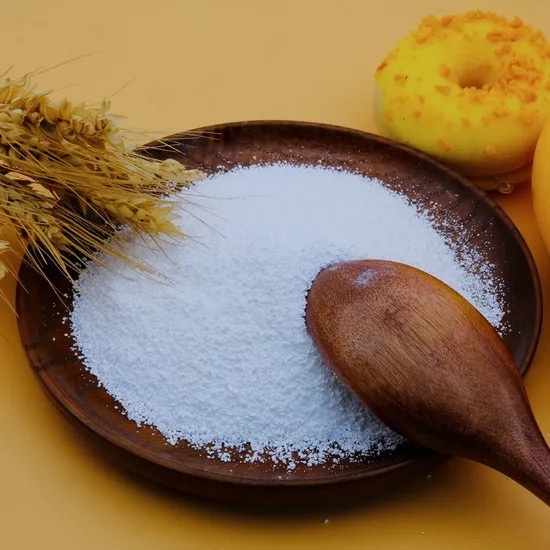







Content Menu
● Safety fundamentals and regulatory landscape
● Insights from scientific and health sources
● Sorbitol in foods: usage guidelines and formulation considerations
● From a manufacturing partner's perspective: blending, sourcing, and OEM/ODM
● Sorbitol in the context of your business portfolio
● Practical usage recommendations for overseas manufacturers
● Media integration and visual planning for a compelling article
● Is Sorbitol Safe? A nuanced takeaway
● FAQ
>> 1. How much Sorbitol is safe to consume daily?
>> 2. What are common side effects of Sorbitol?
>> 3. Can Sorbitol replace sugar in all applications?
>> 4. How does Sorbitol interact with other sweeteners?
>> 5. What labeling considerations are required for Sorbitol-containing products?
Sorbitol is a sugar alcohol widely used as a low-calorie sweetener in foods, beverages, and oral care products. It also serves as a texturizing agent and humectant in a range of formulations. For overseas manufacturers seeking reliable health-ingredient solutions, Sorbitol offers a balance of sweetness, stability, and process compatibility, particularly when integrated into blended-sweetener systems or tablet formulations. This article examines Sorbitol safety, regulatory considerations, practical usage guidelines, and how a China-based manufacturing partner specializing in natural sweeteners, functional polyols, and dietary fibers can support Sorbitol-containing product development, blending, and OEM/ODM services.

Sorbitol, also known as glucitol, is a sugar alcohol derived from glucose reduction. In food applications, it provides roughly half the calories of sucrose and has a cooling sweetness profile. Sorbitol is highly hygroscopic, which makes it useful as a humectant to maintain moisture in baked goods and confectionery, and it participates in sugar-free formulations, often in combination with other sweeteners to achieve targeted taste and mouthfeel. In healthcare and pharmaceutical contexts, Sorbitol serves as a laxative agent when administered in higher doses, and as a pharmaceutical excipient in tablet production for binder or filler roles. This dual utility—food-grade sweetness and controlled pharmaceutical performance—highlights why Sorbitol remains a staple in global ingredient supply chains. In practice, Sorbitol is typically used at concentrations defined by product type, regulatory guidance, and consumer labeling requirements.
Regulatory frameworks across major markets consistently evaluate Sorbitol for safety when consumed within established guidelines. The prevailing conclusion is that Sorbitol is safe for use in foods and medicines at recommended levels, with certain caveats regarding excessive intake.
- Safe use within limits: Sorbitol is considered safe when used according to good manufacturing practices and labeling requirements. As with many sugar alcohols, individualized tolerance varies, and high intake can lead to gastrointestinal (GI) discomfort. For most individuals, Sorbitol-containing products can be consumed without adverse effects when portion sizes and daily intake are kept within reasonable bounds. This aligns with general safety assessments that support Sorbitol's continued use in a wide range of consumer products.[1][2]
- GI tolerance and laxative effects: A key safety consideration is the GI laxative effect that becomes more likely with higher doses. Sugar alcohols, including Sorbitol, can draw water into the colon and alter gut motility, leading to bloating, gas, cramping, and diarrhea in sensitive individuals or after large single servings. The degree of GI response is dose-dependent and varies among people. This is particularly relevant for products marketed to individuals with sensitivities or specific digestive conditions. Regulatory and industry guidelines emphasize clear labeling of sorbitol content and, where appropriate, warnings about potential GI effects.[11][1]
- Long-term considerations and microbiome effects: Emerging research explores how long-term consumption of sugar alcohols might influence gut microbiota composition and metabolic responses. Some animal studies suggest possible shifts in gut microbial communities and glucose tolerance, though extrapolation to humans requires caution. While such findings can inform product development and consumer education, they do not override established safety for typical dietary use when consumed within recommended amounts. Industry readers should watch ongoing literature for updates and adjust labeling or usage guidance accordingly.[3][5]
- Toxicology and carcinogenicity: Conventional safety assessments to date do not indicate inherent carcinogenic risk from Sorbitol at typical exposure levels. Regulatory bodies have reviewed toxicology data and generally find no evidence of systemic toxicity or carcinogenic risk attributable to Sorbitol at acceptable intake levels for food and pharmaceutical use. As with any ingredient, continuous monitoring of new research is prudent to confirm long-term safety profiles.[2][4]
- Comparative safety with other sugar alcohols: Sorbitol is often evaluated alongside other sugar alcohols such as xylitol, mannitol, and erythritol. Each sugar alcohol has a distinct GI tolerance and caloric profile. Sorbitol's higher potential for GI symptoms at moderate-to-high intakes contrasts with certain polyols like erythritol, which generally has lower GI impact in typical dietary amounts. This information informs formulators when selecting blends of sugar alcohols to optimize taste, mouthfeel, and tolerability.[12][2][11]
- Microbiome and metabolic studies highlight that long-term consumption of sugar substitutes can influence gut bacteria and metabolic outcomes in some models. While these findings underscore the importance of responsible product design and labeling, they do not negate Sorbitol's established use in foods and medicines when properly formulated and portioned. Manufacturers should consider consumer education and transparent labeling to address any digestibility concerns and to support health-conscious product positioning.[5][3]
- Practical safety notes emphasize that regulatory agencies may allow higher daily intakes under specific conditions, yet typical consumer products should be formulated to minimize the risk of GI discomfort. For example, healthcare or laxative uses involve different dosing paradigms than everyday food products, and labeling should reflect the intended use. This distinction is critical when communicating with overseas manufacturers about Sorbitol-containing product lines.[1][2]
- Dosage ranges: In food applications, Sorbitol is often used to reduce caloric load, improve texture, and maintain moisture. Typical usage varies by product category, and formulations frequently employ Sorbitol in combination with other sweeteners to balance sweetness intensity, onset of sweetness, and aftertaste. When Sorbitol is used at higher levels, GI tolerability becomes a consideration, and small-batch testing with consumer panels is recommended to optimize acceptability while safeguarding digestive comfort.[1]
- Flavor and texture interactions: Sorbitol's sweetness is approximately 60% of sucrose on a weight basis, with a clean, cool mouthfeel. Its hygroscopic nature helps retain moisture in products such as sugar-free confectionery, baked goods, and chewing gum. In tablet and capsule formulations, Sorbitol can function as a bulking agent or flow aid, contributing to compactness and uniformity. Blended-sweetener strategies often pair Sorbitol with high-intensity sweeteners to achieve target sweetness profiles while managing aftertaste.[12][1]
- Labeling and consumer safety: Clear labeling of Sorbitol content informs consumers about potential GI effects, particularly for individuals sensitive to sugar alcohols. Labeling considerations include disclosing the presence of Sorbitol and any related warning statements when products may trigger laxative effects if consumed in large amounts. For regulated markets, adherence to local guidelines on labeling claims and disclosures is essential.[11][1]
- Regulatory alignment for overseas manufacturing: For exporters and contract manufacturers, maintaining consistent quality control, purity standards, and traceability is essential. Sorbitol suppliers should provide certificates of analysis confirming purity and residual solvent levels, while manufacturers should implement robust QA/QC systems to ensure batch-to-batch consistency. This aligns with the OEM/ODM services offered by health-ingredient-focused factories that specialize in blended-sweetener development and tablet production.[2][1]

- Blended-sweetener development: Sorbitol works effectively as a polyol backbone in blends, enabling tailored sweetness, texture, and mouthfeel. A partner factory with expertise in natural sweeteners and dietary fibers can formulate optimized blends that meet taste, caloric, and functional targets while ensuring compatibility with downstream processes such as tablet compression and coating. This is particularly relevant for overseas manufacturers seeking turnkey ingredient systems that align with health-focused product portfolios.[1]
- Tablet production and excipient roles: In tablet formulations, Sorbitol serves as a filler, disintegrant support, or shaping agent depending on the formulation. Reliable supply, consistent particle size, and appropriate moisture control are critical to achieving uniform tablet weight and disintegration behavior. OEM/ODM capabilities for blending, granulation, and tablet production can be a strategic advantage for international clients seeking end-to-end solutions.[1]
- Quality control and purity: Maintaining high purity levels and rigorous QC processes reduces the risk of impurities that could affect taste, texture, or safety in Sorbitol-containing products. Suppliers should provide full batch records, purity profiles, and compliance documentation to support regulatory submissions and market access in target regions. A knowledgeable partner can bridge regulatory expectations, quality requirements, and production capabilities for overseas manufacturers.[2]
- Synergy with natural sweeteners and dietary fiber: Your factory's core strengths include natural sweeteners, functional polyols, and dietary fiber. Sorbitol complements these offerings by enabling blended-sweetener formulations that optimize sweetness and mouthfeel while contributing to reduced caloric content. Integrating Sorbitol into isomaltulose-based or other natural sweetener systems can support product differentiation and health-oriented positioning in international markets.[1]
- Sustainability and supply chain considerations: In today's health-focused markets, sustainability and traceability are increasingly important. Sorbitol suppliers should provide detailed information on sourcing, manufacturing processes, and environmental stewardship. Aligning Sorbitol procurement with your broader sustainability goals can enhance the marketability of your isomaltulose-related and dietary-fiber-based solutions.[1]
- Start with small-scale pilot runs: When introducing Sorbitol into a new product line, begin with pilot batches to assess sweetness perception, texture, and GI tolerance in the target consumer population. Use a sensory panel and consumer testing to refine formulation, ensuring the final product meets taste expectations while staying within safe consumption ranges.[1]
- Prepare robust labeling and consumer education: Transparent labeling of Sorbitol content and potential GI effects is essential, particularly in markets with strict labeling requirements. Develop clear consumer guidance about serving sizes, daily intake considerations, and the different uses of Sorbitol in foods, beverages, or medicines.[11][1]
- Plan for regulatory expectations and safety messaging: While Sorbitol is generally recognized as safe in many jurisdictions, regulatory agencies may require specific labeling statements or warnings for products marketed to sensitive populations. Build regulatory review into product development timelines and engage with regulatory consultants or local partners to ensure compliance.[2][1]
- Quality assurance in international supply chains: To mitigate supply-chain risk, implement supplier qualification processes, perform regular audits, and verify purity and compliance documentation. A reliable supplier should provide lot-specific certificates of analysis, stability data, and traceability records, enabling overseas manufacturers to meet quality standards in their markets.[2]
- While this text focuses on content depth, a compelling article can integrate visuals like:
- Infographics illustrating Sorbitol's metabolic pathway and absorption.
- Comparative charts of Sorbitol versus other sugar alcohols in calories and GI tolerance.
- Process diagrams showing Sorbitol's role in blending and tablet formulation.
- Case-study visuals or before/after sensory impressions for product categories (confectionery, baked goods, oral care).
- For overseas manufacturers, practical visuals illustrating pilot formulation steps, QC checklists, and labeling examples can boost comprehension and confidence in the supplier's capabilities.
- Sorbitol is safe for general consumption when used within recommended limits and with appropriate labeling. The key safety considerations revolve around GI tolerability at higher doses and the need for clear consumer guidance. Regulatory agencies worldwide have assessed Sorbitol and found it acceptable within defined exposure ranges, provided that labeling and usage guidelines are followed. The potential for GI symptoms increases with dose and individual susceptibility, so formulators should design products to minimize high-per-serving intakes and clearly communicate serving recommendations to consumers.[11][2][1]
Sorbitol remains a versatile, safe, and commercially valuable polyol for health-oriented products, especially when integrated into blended-sweetener systems and OEM/ODM formulations. For overseas manufacturers seeking reliable partner support, a China-based factory with expertise in natural sweeteners, functional polyols, and dietary fiber can deliver end-to-end solutions—from formulation development and purity assurance to tablet production and customized OEM/ODM services. By prioritizing regulatory alignment, transparent labeling, and rigorous quality control, Sorbitol-containing products can meet consumer expectations for safety, taste, and health benefits across global markets.

Daily tolerability varies by individual and product category; typical dietary exposure from common foods is well within established safety limits, but high single servings can cause GI effects such as bloating or diarrhea. Always follow labeling guidance and recommended serving sizes to minimize GI discomfort.[2][1]
The most common side effects are GI-related, including bloating, gas, cramps, and diarrhea, especially after consuming larger amounts in a single sitting. Tolerability differs among individuals, so gradual introduction in new formulations and clear consumer guidance are prudent.[11][1]
Sorbitol can replace sugar in some applications to reduce calories and influence texture, but it does not fully mimic all aspects of sucrose, including sweetness intensity and browning behavior. Blending Sorbitol with other sweeteners and functional ingredients can achieve targeted taste and performance while managing GI tolerance.[1]
Sorbitol blends well with high-intensity sweeteners and other polyols to balance sweetness, mouthfeel, and aftertaste. Blends are often tailored to deliver a specific sweetness profile, cooling effect, and textural characteristics, while controlling total caloric impact and GI response.[1]
Labeling should disclose the presence of Sorbitol, indicate serving sizes, and communicate potential GI effects for sensitive individuals. In many markets, regulatory guidelines require transparency about sugar alcohol content and any related warnings, so aligning with local labeling rules is essential.[11][1]
[1](https://pmc.ncbi.nlm.nih.gov/articles/PMC6225370/)
[2](https://www.cir-safety.org/sites/default/files/xylito122019FR.pdf)
[3](https://www.sciencedirect.com/science/article/abs/pii/S0024320522004702)
[4](https://www.news-medical.net/health/Sorbitol-Research-and-Safety.aspx)
[5](https://pubmed.ncbi.nlm.nih.gov/35792179/)
[6](https://www.uclahealth.org/news/article/how-safe-are-sugar-alcohols)
[7](https://www.sciencedirect.com/science/article/abs/pii/S0278691525001905)
[8](https://www.health.harvard.edu/blog/how-healthy-is-sugar-alcohol-202312183002)
[9](https://www.cir-safety.org/sites/default/files/Mannitol,%20Sorbitol,%20Xylitol_0.pdf)
[10](https://www.upstate.edu/whatsup/2023/080223-liver-cancer-the-potential-side-effect.php)
[11](https://health.clevelandclinic.org/what-to-know-about-sugar-alcohols)
[12](https://www.webmd.com/drugs/2/drug-10305/sorbitol/details)
